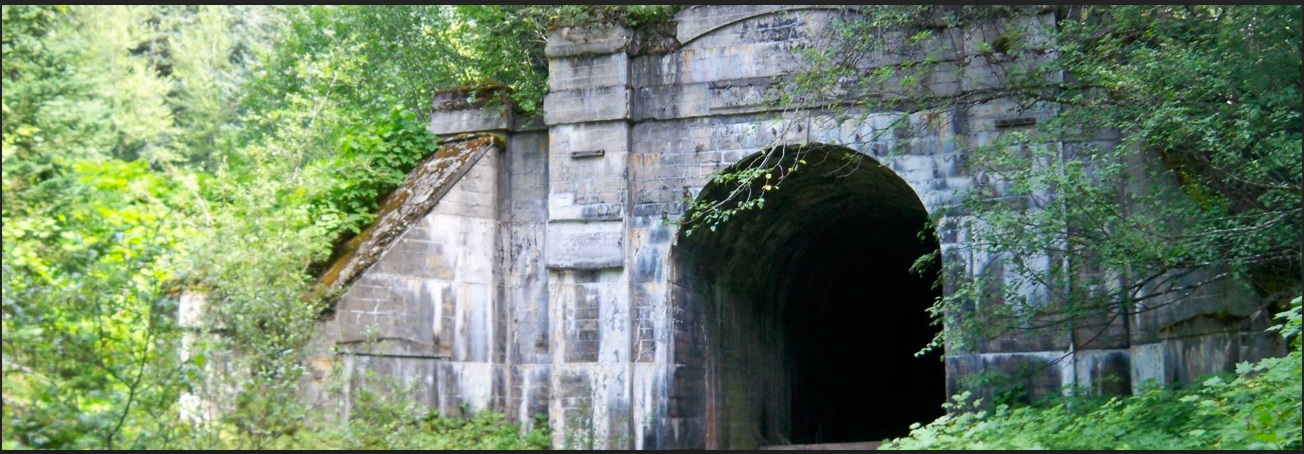At the moment, I’m looking out into the rolling hills and prairie covered with a thick layer of snow and hoarfrost, picturesque and beautiful. The terrain is mostly flat, but if you squint carefully, you can see buttes and mountains in the distance. Peaceful and snowy, it’s the perfect holiday snow. It’s easy to forget how destructive crystalized water can be when it accumulates in mountainous areas and dangerous travel routes. Today, we’re not talking about pristine snow banks and frosty trees, we’re looking into an incident where the snow on the mountain turned deadly and killed nearly 100 people on their way to the next destination by train.

The Cascade Tunnel in Washington State was a thorn in the side of railroad engineers for decades. Built between 1887 and 1900, it was meant to replace the original switchback tracks that slowly descended the mountain through Steven’s Pass. Just east of the Seattle metro area, the tunnel was meant to be an improvement, but the construction caused issues with coal powered trains and the plumes of smoke they created being caught in the tunnel. Eventually, the tunnel would be improved with better ventilation and electricity.
Snow and ice were constant worries for the engineers and passengers on the train as it weaved through the pass towards the tunnel. More than once, the train had to stop just short of the tunnel to clear snow from the tracks and get back on their route. Winter weather was harsh and unforgiving in the region, but transportation through the snowy tunnel would continue as much as possible in the cold air. When the tunnel wasn’t blocked by a snow bank, it was a short respite from the weather, with approximately 2.6 miles of track through the tunnel.

Just ten years after the tunnel’s opening, an incident would occur that necessitated the complete abandonment of the tunnel. In 1910, two trains had made it through the tunnel but were stopped on the other side due to accumulated snow on the tracks. They took refuge near the railroad town of Wellington. For three days, the passengers and crew waited for the blizzard to subside, but with supplies running low and the failure of telegraph lines, many passengers elected to hike out of the valley to safety. The ones who did may have saved their own lives. About 120 people remained on the trains, waiting for the show to clear enough to continue their journey.
Suddenly, a roar was heard in the surrounding mountains. There was no time to react as a tsunami of ice crashed towards the stopped trains on the tracks. Within seconds, the trains were gone; buried in the snow and pushed into the river gorge just below. 23 passengers were saved by the emergency rescuers, dug out of the snow cold and shivering, but alive. Sadly, 96 people would not be so lucky, and all were killed in the incident. It was considered the largest train disaster in the 20th century.

Plans were drawn up immediately to build a new tunnel at a lower elevation to alleviate the dangers of wintertime travel, wishing desperately to avoid another disaster like the avalanche in 1910. The new tunnel would be completed in 1929 and christened the longest tunnel in the US at 7.8 miles. Engineers hoped that the longer tunnel would keep the trains and passengers safe in the snowy mountain pass. Today, both tunnels are called the Cascade Tunnel, though the old one is now impassable and the new tunnel is nearly 5 miles away from the original route.

Hikers and thrill seekers take the Iron Goat Trail, a 5.5 mile looping trail in the Cascades, to see the old tunnel in its disrepair. After a cave-in in 2006, the tunnel is no longer passable for enterprising hikers. Today, the tunnel is just a sight one can view from the entrance, but this is where the stories of hauntings continue to this day. For decades, reports circulated that travelers experienced hearing voices and being tapped on the shoulder while in the tunnel. Some even claimed to see full-bodied apparitions standing in the darkness of the tunnel and illuminated by flashlights.
Though one can only view the entrance now with the danger of the rest of the tunnel collapsing, the haunting reports continue. Voices can be heard echoing through the tunnel, sometimes terrifying hikers into completing their hike early. With 96 casualties attributed to the avalanche, stories abound about paranormal activity near the deadly, decommissioned tunnel. Would you take the hike up Iron Goat Trail to see the tunnel with a storied and tragic past? Would you be brave enough to listen for the ghostly voices and watch for apparitions of long-dead passengers and employees?
- About the Author
- Latest Posts

Born in Death Valley and raised on the prairie, Deborah is a Wyoming-based paranormal researcher and University of Wyoming graduate. Her interests lie in folklore, history, symbolic interaction and research. She also researches the paranormal academically and is a graduate student studying sociology.


